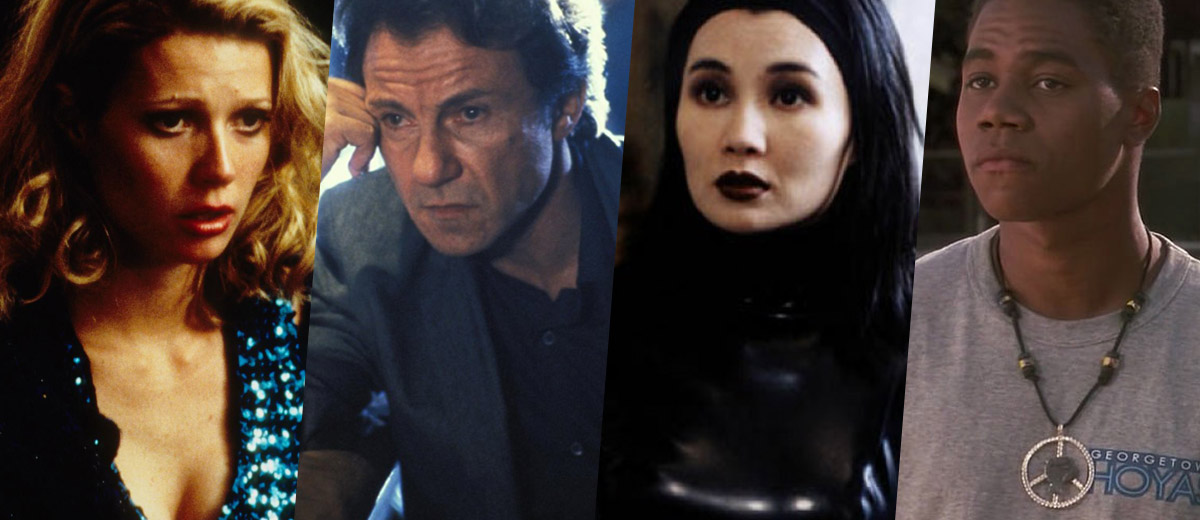
“Hôtel Terminus: The Life And Times Of Klaus Barbie” (1988)
Marcel Ophüls’ father, classic director extraordinaire Max Ophüls, fled from the Nazis in the ’30s and found himself in America. Forty-plus years later, the son directed this devastatingly detailed and intricate documentary about one of the most obscure Nazi militants to come out alive from the Second World War. Klaus Barbie, who built an intimidating reputation for himself as a highly skilled torturer before and during the war, was extradited to South America and not only allowed to breathe the free air but was employed for his skills. Running almost five hours in length, ‘Hotel Terminus’ is built on the testimonials of victims, government agents, journalists and investigators who all have some kind of opinion or memory of Barbie. Through recollection and heart-stopping intimacy, one that can only come from a man whose own family suffered in some way from the Nazis, Ophüls examines a standard-bearer for one of the greatest human evils the world has ever seen. It’s a story with plenty of twists and turns and ambiguous questions left unanswered, where no one (not even the Allies) comes out completely clean. This essential documentary went on to win the Best Documentary Feature Academy Award.

“In The Company Of Men” (1997)
It premiered at Sundance the same year, but Un Certain Regard has a long tradition of separating the wheat from the chaff of the Sundance crop, and Neil LaBute’s “In the Company of Men” is one of the greatest examples as far as breakout films are concerned. Told in long, unpretentious takes where the camera is carefully positioned and angled at, mostly, Chad (Aaron Eckhart) and Howard (Matt Malloy), this film is a ferociously scripted excavation of male insecurity. The character of Chad, Eckhart’s breakout turn, has a PhD in misogynist assholery, exemplifying every feminist’s worst nightmare to such a high degree that his black, satirical humor acts like a wake-up call for the male super-ego, the spotlight on its hidden insecurities burning a hole through its id. The long takes become more and more unbearable as Chad’s evil psyche gets peeled, with the film’s title looming more ominously as the film comes to its devastating final act. This is what you get, LaBute seems to say, in the company of certain men. Of course, the genius move is making Howard feel it the worst.

“Irma Vep” (1996)
French cinema as self-reflection through foreign eyes, Olivier Assayas’ tantalizing and highly original “Irma Vep” can be earmarked as the director’s big break even though it wasn’t his first time at UCR (that would be “Cold Water,” two years before). ‘Irma’ follows the irreplaceable Maggie Cheung, who plays herself and prepares to shoot a movie for French director René Vidal (Jean-Pierre Leaud) — a remake of the classic silent serial “Les Vampires” by Louis Feuillade. Due to Assayas’ renowned reputation as a film critic before he picked up the camera, the film takes on a special significance. Only a film critic’s sensibilities can churn out something so fantastical and meta at the same time, a film about the place of French cinema in history and the place of French history in cinema, all through the eyes of an outsider who comes from her own distinctly different artistic traditions of Hong Kong (which Assayas was, of course, a huge fan of). Establishing Assayas as one of the frontrunners in today’s French cinema and producing another iconic image featuring Maggie Cheung (in black latex this time), “Irma Vep” is an irresistible delight.

“Life, And Nothing More…” (1992)
The second installment of master director Abbas Kiarostami’s Koker trilogy (preceded by “Where is the Friend’s Home?” and followed by “Through The Olive Trees”), “Life, And Nothing More…” is literally just that: a seemingly plotless, cinematically unconventional unspooling of life itself on screen. This is one of Kiarostami’s signature traits as the foremost director of hybrid docudramas, and together with “Close-Up” two years before, ‘Life’ broke Kiarostami out to the Western world as a significant cinematic voice from the Middle East. The Iranian director playfully (with a pinch of melancholy never far away) blurs the lines of fact and fiction as the “director” of ‘Friend’s Home’ (Farhad Kheradmand) visits Koker with his son to look for survivors after an earthquake hit the town. Kiarostami uses real events and real people and fictionalizes them into his story which, thanks to the authenticity of the “performers” and palpable reality that’s always just outside the frame, is compelling beyond words.

“Ratcatcher” (1999)
A raw and visceral feature debut that always welcomes murmurs of approval in any conversation about the depth of female-directed films, “Ratcatcher” is Lynne Ramsay‘s dauntless and sure-footed entrance to the film world. It’s set in Glasgow circa 1970 where the grime and stench of the environment seeps through the cinema vérité, and our mouths drop in awe as a mouse balloons up into space and onto the moon. “Ratcatcher” is at once a coming-of-age tale for 12-year-old James (William Eadie) and his peers, and a canvas of urbanite lifestyles below the poverty belt and in the midst of a housing crisis. The youths and adults who populate its world feel so authentic, you’re often left wondering if it’s a documentary you’re watching from the actual ’70s. Since her breakout debut, Ramsay had developed a no-nonsense reputation for her artistic integrity, as her explosive exit from “Jane Got A Gun” proved. This uncompromising and artistically organic approach gives “Ratcatcher” its staying power, making it a fantastically fitting harbinger for one of the greatest female directors working today.





